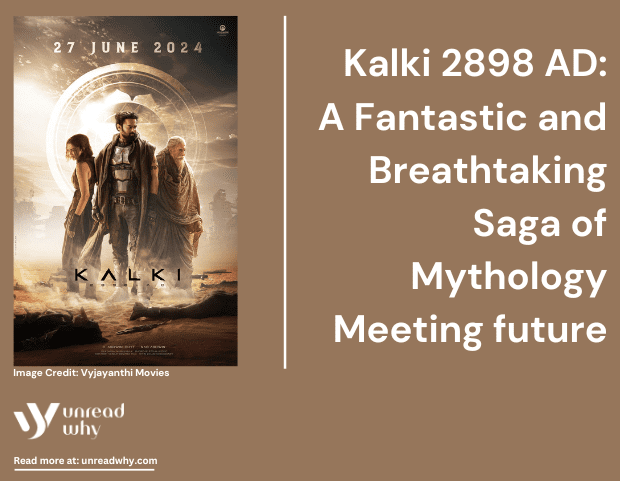Kalki 2898 AD
With the genre continuously evolving in cinema, only a few movies can properly blend futuristic elements with a mythological perspective. One such example is Kalki 2898 AD. Representing a perfect blend of a dystopian future with Hindu mythology, the film showcases a commitment to its audiences to present a journey of tradition with time.
The mythological roots
Kalki is the 10th incarnation of a Hindu god, lord Vishnu, The protector of the universe according to Hindu mythology. The Hindu Purana mentions the appearance of Kalki at a specific time in the future. The Indian mythology States that with the end of the Kali yug, the Kalki will appear to protect the universe. When the Kali Yuga is at the flag end with an increasing incidence of moral decline, the Kalki will present with a sword on hand and be mounted on a horse, specifically a white horse.
He is the protector of the world and destroyer of evil forces. He has come to protect and commence a new era by restoring virtue and truth. Kalki is not just a destructive force mentioned in The Hindu Puran, but he is also a symbol of a new beginning with hope. Hindu cosmology states that the success of good will always come over evil to represent a new beginning and that the cycle is continuous.
Linking futurism with mythology
By representing the mythological link, Kalki 2898 AD decorated a beautiful narrative in a dystopian future. The director of Kalki 2898 AD, Nag Ashwin, successfully presents a contradictory perspective on the mythological story. The director has presented a link between the coexistence of advanced technology and subsequent corruption. The coexistence represents the reference for the advent of Kalki. In this situation of corruption, saving the world became essential.
The director of Kalki, 2898 AD, developed a plot that represents specification. By presenting the social norms and mentioning the devastating scenario, the movie elaborates on the importance of raising Kalki Avatar. Kalki is demonstrated as a ray of hope and a flag bearer of change. The movie revolves around the struggle for justice and redemption between positive and negative, good and bad. The furious perspective represents the power of Kalki.
The director also represents provision by mentioning some questions on historical patterns and human trajectory. The movie has a precise and excellent cast. Amitabh Bachchan plays the role of Ashwatthama, while Prabhas is seen in a dual role. He acts as both Karna and Bhairava, while Kamal Hassan plays Yakshin. Deepika Padukone plays the role of SUM-80.
Nag Ashwin, the director of Kalki 2898 AD, represents a perfect blend of storytelling with visuals. The audiences of the movie can experience an excellent depiction of the world in a future context through the visuals. Technology incorporation successfully presents the image of Kalki. Mounted on the back of a white horse, he is considered as a metaphor for a new beginning and hope for the future. The movie presents modernity and mythology. The increased discussion on the movie Kalki 2898 AD has already created a new spark in Indian movies. With the perfect blend of traditional or mythological narrative with fiction, the movie successfully presents a re-imagination.
Experience the EPIC MAHA BLOCKBUSTER #Kalki2898AD, now in cinemas.
— Kalki 2898 AD (@Kalki2898AD) July 3, 2024
– https://t.co/ylFvkYIEcJ#EpicBlockbusterKalki @SrBachchan @ikamalhaasan #Prabhas @deepikapadukone @nagashwin7 @DishPatani @Music_Santhosh @VyjayanthiFilms @Kalki2898AD @saregamaglobal @saregamasouth pic.twitter.com/Cq33XUXopm
Moreover, Kalki 2898 AD is more than a mere movie; it is a reminiscence of mythology. The efficient portrayal of Hinduism from the ancient narratives and its connection in the contemporary context represents a successful attribute. The transitional saga of Kalki gains a fresh perspective from the movie. The audience will experience the struggle that occurred between positive and negative in ancient times. The cinematic content and the visuals present a landmark for creating an effective blend.


